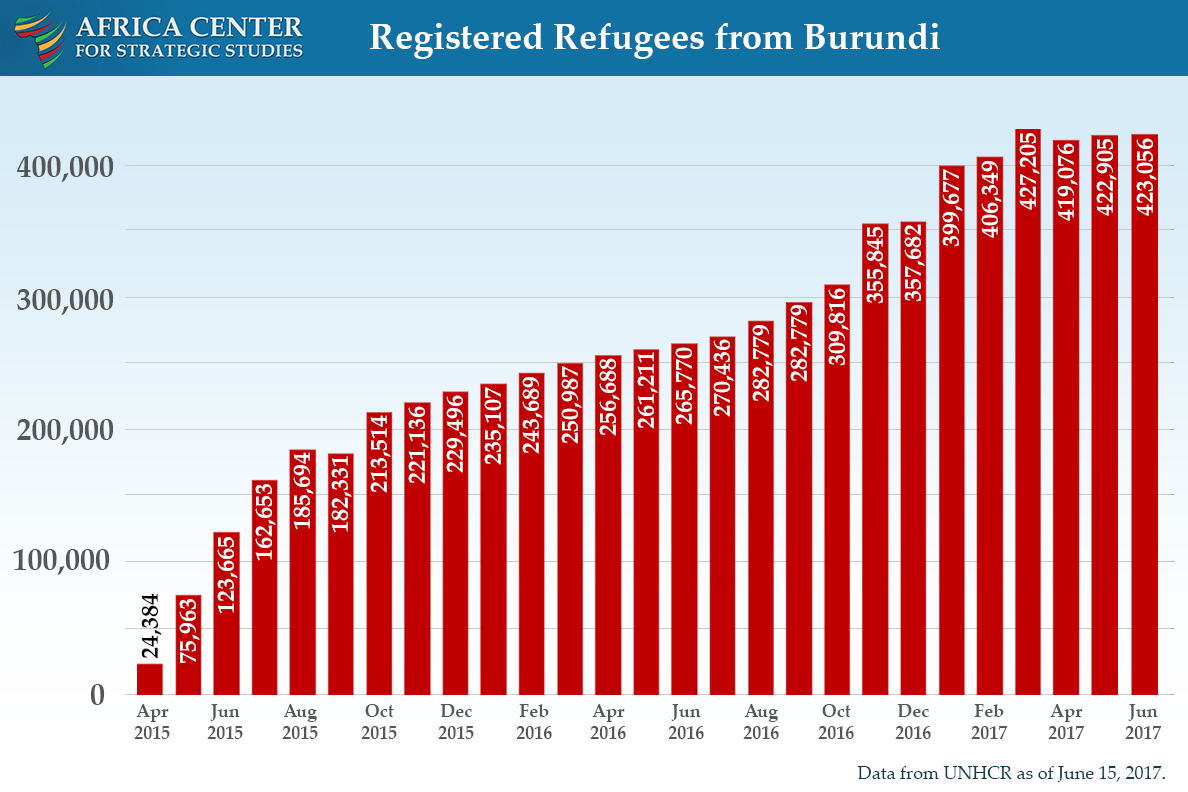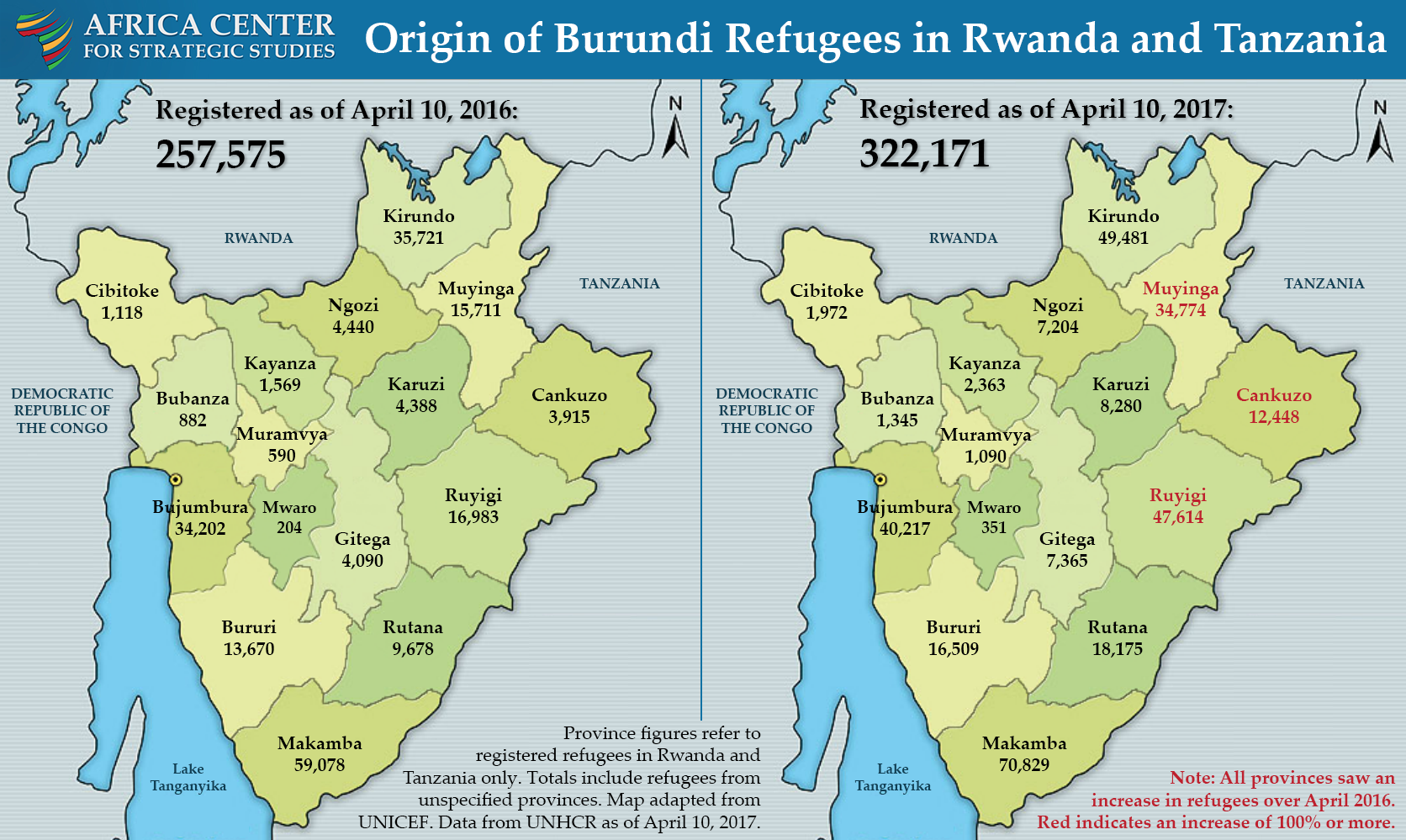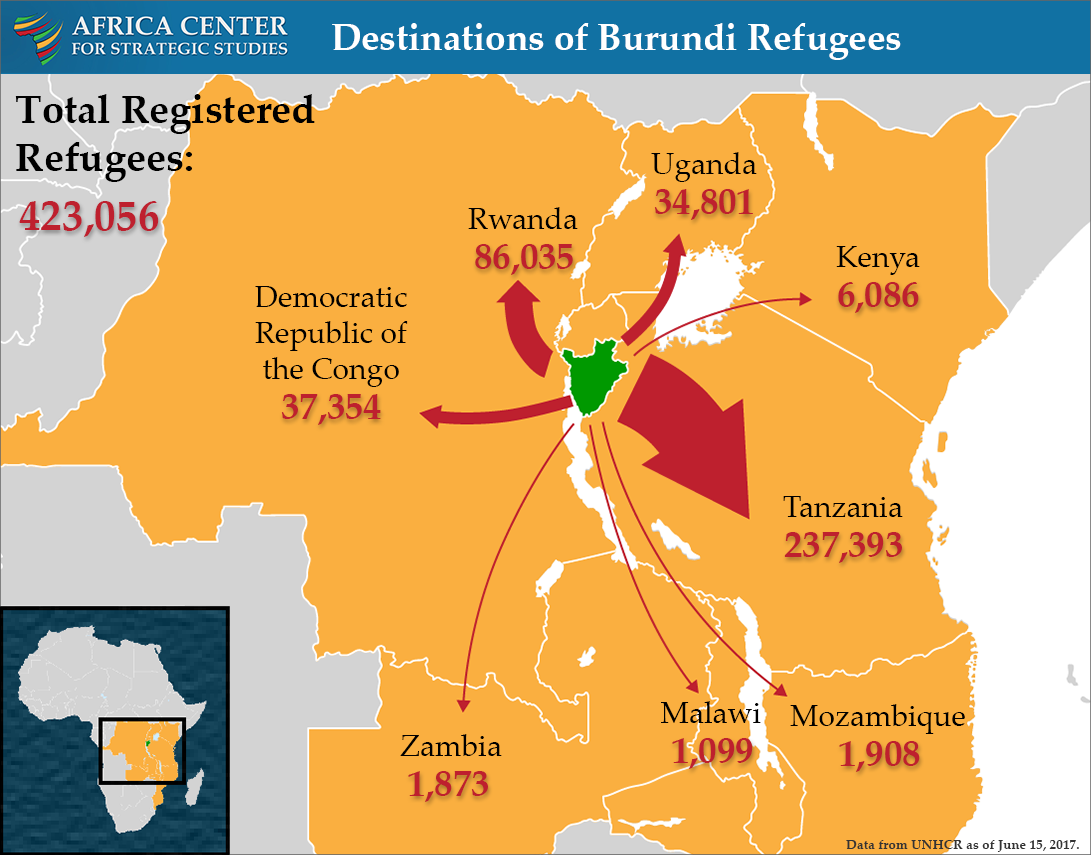
An upward surge in Burundian refugee flows in 2017 corresponds with a rise in conflict incidents, many of which have been initiated by the Imbonerakure—the ruling party’s youth militia. In June 2017, the United Nations Commission of Inquiry on Burundi documented mass atrocities on a widespread scale “reinforced by hate speech, sometimes with an ethnic dimension, delivered by certain state officials and members of the ruling party.”
- The number of registered refugees fleeing Burundi has risen 60 percent in the last year, increasing from 265,770 in June 2016 to 423,056 in June 2017.
- The greatest jump in refugee flows comes from Burundi’s eastern provinces, where Imbonerakure mobilization, patrols, roadblocks, recruiting, and attacks have been concentrated.
- The Imbonerakure also has a growing presence in Makamba in the south—a focal point for clashes between antigovernment rebels and security forces.
- The entire region continues to bear the costs of Burundi’s political instability. Tanzania’s Nyarugusu camp is the third largest in the world. The country hosts 237,393 Burundian refugees in facilities built for 50,000, and humanitarian needs have stretched the national health system and strained the country’s food supply.


Africa Center Expert
- Joseph Siegle, Director of Research
Additional Resources
- United Nations Human Rights Commission of Inquiry on Burundi, “Burundi: Persistence of Serious Human Rights Violations in a Climate of Widespread Fear,” June 15, 2017.
- Africa Center for Strategic Studies, “Dismantling the Arusha Accords as the Burundi Crisis Rages On,” Spotlight, March 13, 2017.
- Paul Nantulya, “Stopping the Spiral in Burundi,” Spotlight, Africa Center for Strategic Studies, January 28, 2016.
- Joseph Siegle, “Congressional Testimony: The Political and Security Crises in Burundi,” Africa Center for Strategic Studies, December 10, 2015.
- Paul Nantulya, “Why the Arusha Accords Are Central,” Spotlight, Africa Center for Strategic Studies, August 5, 2015.
- Thierry Vircoulon, “Insights from the Burundi Crisis II: An Army Divided and Losing Its Way,” International Crisis Group, October 2, 2015.
- Nicole Ball, “Lessons from Burundi Security Sector Reform Process,” Africa Center for Strategic Studies, Africa Security Brief No. 29, November 2014.
More on: Burundi

